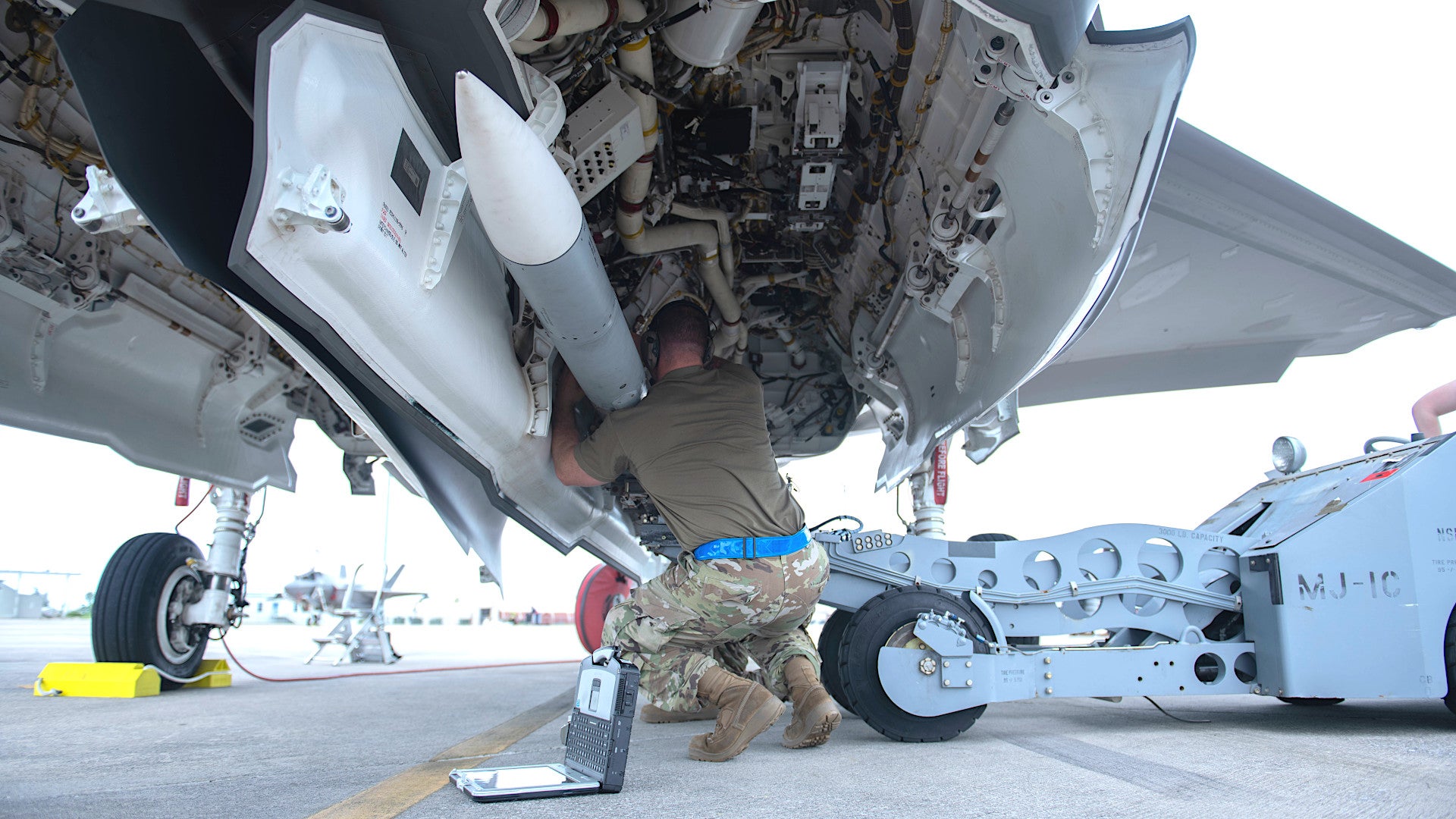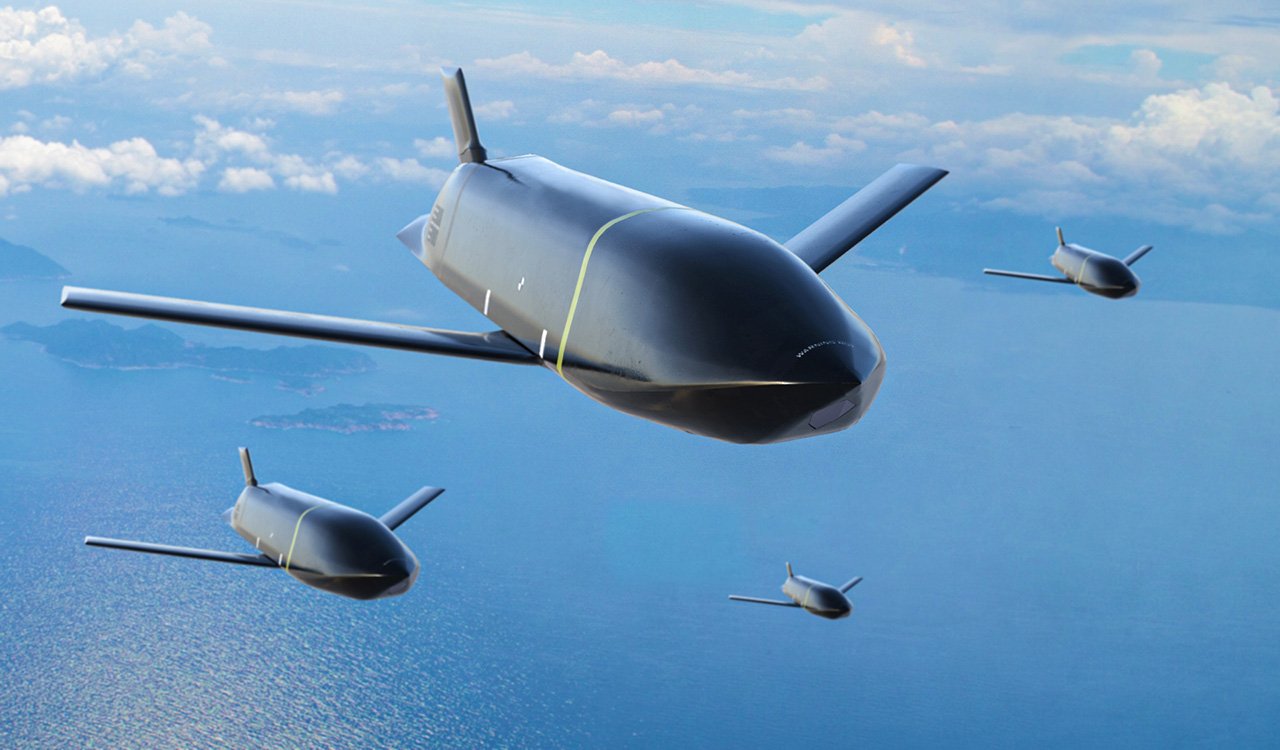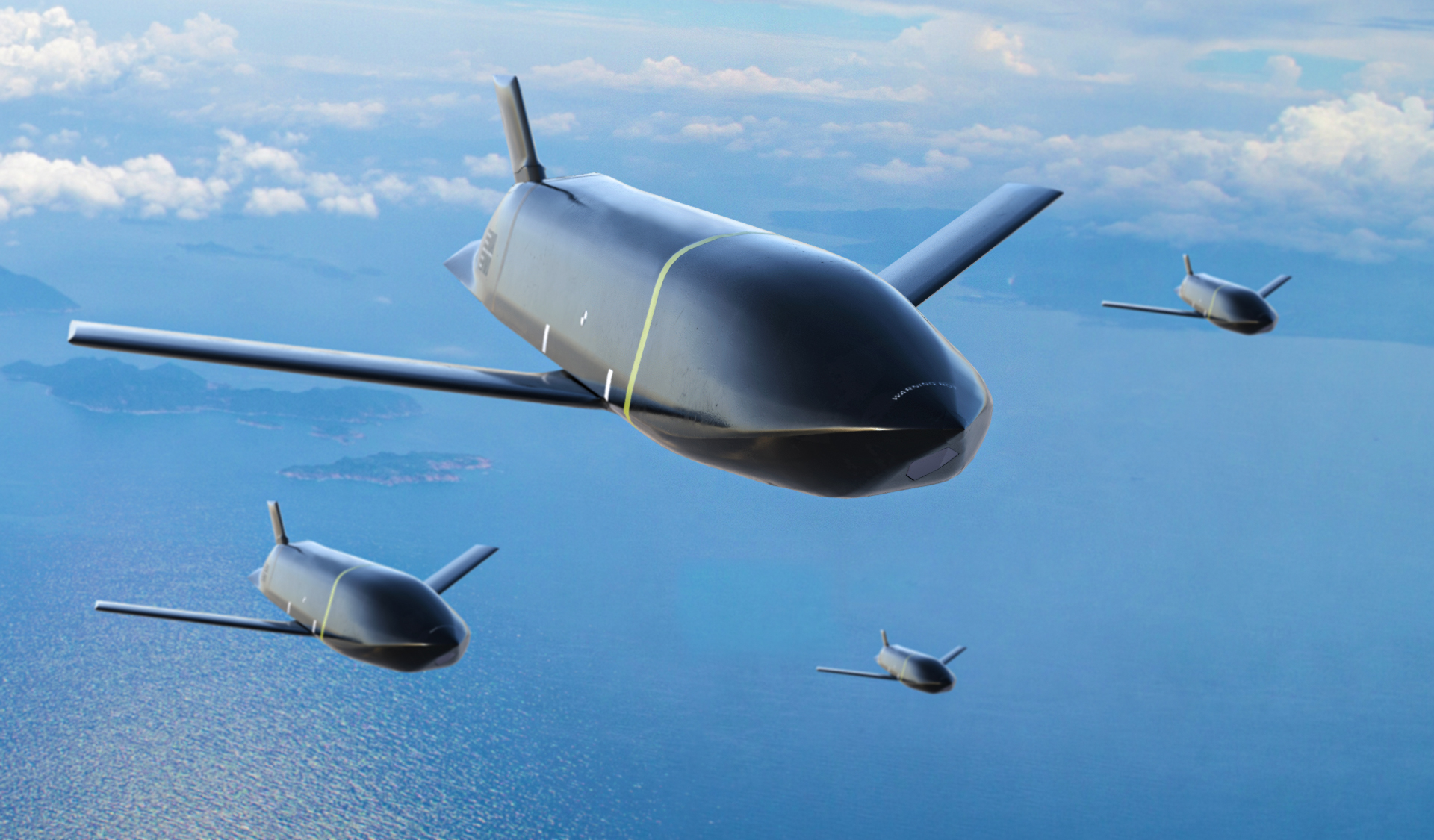bring_it_on
I really should change my personal text
- Joined
- 4 July 2013
- Messages
- 3,123
- Reaction score
- 2,239
I measure it as roughly 70-74 inches in length.
Yeah I'm using Speed Racer more as a template for something that maximizes IWB volume and fit 4 internally could look like. So far, no one besides LM has shown such a vehicle concept. It is clear that while the Navy will trade magazine size vs something like SPEAR 3 it will gain range and mission system volume. This is a really smart requirement given the Navy is already buying the Stormbreaker for F-35C and F/A-18 E/F and plans to perhaps integrate JAGM-F on F-35 as well based on recent solicitations. It is particularly wise given the proliferation of unmanned systems and the Navy's FA-XX that will also have a IWB.Spear is an SDB-class weapon, while MACE envisages something rather larger than that.
What speed would Speed Racer have Subsonic or Supersonic?
I think they want to go straight into production with a mature design that may possibly have already been demonstrated. They want it in the field by FY27 and they haven't even awarded a contract yet.but the focus appears to have been rapid development and low cost production
I think they want to go straight into production with a mature design that may possibly have already been demonstrated. They want it in the field by FY27 and they haven't even awarded a contract yet.
If the target cost can be hit then it's also not that much more than Stormbreaker e.g. 2 x $300k Vs 4 x $200k(ish) so you can still afford to buy in quantity, whilst also getting higher stand off. Although with that higher stand off then I wonder how it is targeted.This is a really smart requirement given the Navy is already buying the Stormbreaker for F-35C and F/A-18 E/F and plans to perhaps integrate JAGM-F on F-35 as well based on recent solicitations
If the target cost can be hit then it's also not that much more than Stormbreaker e.g. 2 x $300k Vs 4 x $200k(ish) so you can still afford to buy in quantity, whilst also getting higher stand off. Although with that higher stand off then I wonder how it is targeted.

Well said indeedLooks like LRASM-B is basically gonna be ASALM. From this week's AvWeek:
"The high-speed, high-altitude LRASM-B uses a Pratt & Whitney integrated rocket/ramjet propulsion system originally developed in the 1970s for the supersonic Advanced Strategic Air-Launched Missile (Asalm)."
This is just pathetic. Our expertise (such as it is) is so behind the times that they have to reach 40 years into the past to find something that actually works? And I suspect the "L" in "LRASM" will leave a lot to be desired as well. ASALM was to have a 300 mile range with the relatively light weight W80. Go to a conventional warhead and range will drop like a rock . I hope ASALM is merely a reference and that this thing will be scaled up and improved or they may as well not even bother. What next, they gonna blow the dust off Talos?
The money quote:
"Jassm-ER was selected as the basis for the “super-stealthy” LRASM-A because it is “a mature missile with mature propulsion,” says Kuller. The Asalm-based propulsion system for the LRASM-B “is as mature as we could get for a high-speed missile,” he says." A 40 year old design, "yep, that's the best we can do". This is what happens when you let your industrial base go to hell.
"Plans call for two air launches of the LRASM-A from a U.S. Air Force bomber and four surface launches of the LRASM-B from the Mk29 vertical-launch canister using the Aerojet Mk72 booster from the Standard SM-3 surface-to-air missile. For the demonstration flights, LRASM-B will use integrated rocket/ramjets originally built for the Asalm-derived Supersonic Low-Altitude Target (SLAT) and stored at China Lake, Calif., since the program was cancelled in 1991, Kuller says."
I guess they're gonna be screwed after they've used those up and they have to try to make more. (That's when it'll get cancelled due to cost escalations and "technical challenges".)
Here's a summary of the last two or so pages of this thread -

Mini Anti-Ship Cruise Missile That Fits Inside An F-35 Is On The Navy's Wish List
The Air Force is also looking for very similar weapons, which would be small in size but possess substantial range.www.twz.com
With a lot of dis/misinformation mixed in, especially about the range of LRASM.
200-300 probably is not far off for AGM-158C-1. The only figure I’ve seen in print is “> 200nm”.
I had thought the ERAM proposal was for a 500lb class warhead, not launch weight, which would definitely put it in a totally different size class. I guess read the request too fast if it’s supposed to be a 500lb AUP.
Me too. But I just looked and ERAM does call for a "500# class weapon" not warhead. So yeah, these actually might be similar.
Damn, I hate having to apologize to TWZ.
The Air Force is leaving it up to the vendors to select the warhead.Me too. But I just looked and ERAM does call for a "500# class weapon" not warhead. So yeah, these actually might be similar.
What is the idea behind MACE? Get more missiles in the air for satuation attacks? More suitable for smaller targets?
Will this be used as a kind of MALD-like decoy for LRASM?
So I'm figuring most would essentially be intended as decoys but with a small HE warhead so if not down it will hopefully hit an active radar and explode, potentially disabling or degrading it and making it all the easier for the following LRASMs to hit.
I have no idea if they intend for this to home in on radar emissions but it seems like that would be ideal. I just wonder how cheap you can make such a sensor? Including whatever full array of sensors LRASM has seems like it would be cost prohibitive.
Isn't Mace perfect for the Navy to take Out enemy radar and then to go in with quicksink? Looks to me like that is one of the ideas
It's a very convenient fuze add-on for any of the standard Mk80series bombs. Convenient enough that I suspect that the next generation of bomb fuzes will have that across the board, in addition to the regular air/ground burst/penetrating fuzing options, once component costs come down enough.I don't get the fascination with Quicksink - it's a nice capability that is practically useless in the Pacific Theater.
Just a way how to take out ships without needing to use the more expensive ashm. Just Mace taking out radar systems for example but as Quicksink is a USAF thing probaly wont see it in the navy like you said.I don't get the fascination with Quicksink - it's a nice capability that is practically useless in the Pacific Theater.
Take a LRASM, half warhead size to 500lb and lop 0.5m off, or 0.8m for B version fit.Here's a summary of the last two or so pages of this thread -

Mini Anti-Ship Cruise Missile That Fits Inside An F-35 Is On The Navy's Wish List
The Air Force is also looking for very similar weapons, which would be small in size but possess substantial range.www.twz.com
Take a LRASM, half warhead size to 500lb and lop 0.5m off, or 0.8m for B version fit.


Pretty sure LRASM is based on the JASSM-ER already.Good news about the LRASM C3/ER variant in production plus getting back the range of the JASSM, that will mean that the LRASM-ER/ER will be able to be fired much further away from the target than the standard LRASM.
Pretty sure LRASM is based on the JASSM-ER already.
